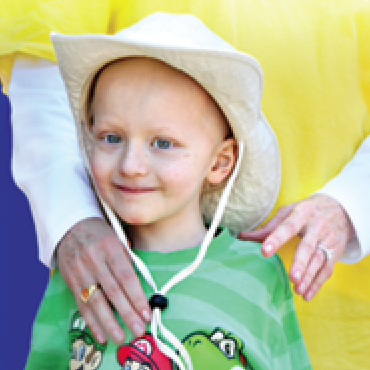
When a 17-year-old girl receives a cancer diagnosis, she experiences a tremendous loss. A loss of such enormous magnitude that she can’t even comprehend all it is that she’s losing.
A year ago, that girl was me.
On December 23, 2017 after months of debilitating pain, I had an MRI that showed a mass on my pelvis. December 25th, I was admitted to Goryeb Children’s Hospital at Morristown Medical Center. On the 26th I had a surgical biopsy that landed me in the Pediatric Intensive Care Unit (PICU). And a few days later I was given a diagnosis: Ewing’s sarcoma.
Boom. I had cancer.
How the hell did I deal with that? Not well.
A lot of people have told me that my positivity is inspiring, but that’s because they’ve only seen one side of my life as a cancer patient—the side that I choose to show to the outside world. I have done my best to portray the optimism, the strength, and the courage in my battle with cancer because it makes me feel better and it makes other people feel better. But in complete honesty, on most days I am overwhelmed by the physical and emotional trauma that cancer has caused me.
Every day, I have to walk through life with an enormous burden.
And I always will.
It doesn’t matter that there is no evidence of disease in my body right now, because the fear that the cancer will return is always looming in the back of my mind. Will I even get to go to college? Will I ever have a career? Will I have the chance to travel and see the world? To start a family? To grow old? Do I have a future?
There are five stages of grief: denial, anger, bargaining, depression, and acceptance. For the past year, I have been grieving my old life—my pre-cancer life—and I am nowhere near the finish line.
For the next six months, The Valerie Fund has given me the unique opportunity to document this challenging, yet pivotal time in my life with a blog. And although I’m certain that this will be difficult, I plan on sharing both the good and the bad of life after cancer. With this, I hope not only to navigate my own fears and struggles, but to give others greater insight into the world of a teenage cancer patient as well.
Read more about Olivia’s story in the next coming weeks as she continues her blog.
ABOUT THE VALERIE FUND: After their nine-year-old daughter Valerie succumbed to cancer in 1976, Sue and Ed Goldstein were determined that no family should have to travel great distances to receive state-of-the-art medical care. Today, more than 6,000 children with cancer and blood disorders benefit immeasurably by receiving their medical treatment close to home in a child-centered environment. The Valerie Fund ensures they do not have to rely on insurance reimbursements to receive a range of customized therapeutic services that enhance their quality of life. For more information, please visit www.thevaleriefund.org.










